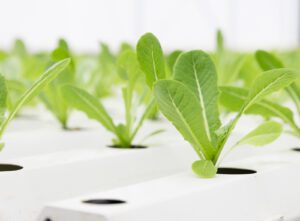In the agriculture industry, innovation is the key to success. Therefore, Plant Variety Protection (PVP) stands as a pivotal mechanism in safeguarding the rights of plant breeders while fostering innovation within the realm of agriculture.
This comprehensive guide will help you delve into the definition of PVP, its significance, the related regulations, and the criteria for obtaining protection for new plant varieties according to the law. You can also read the important Terms of Plant Variety Protection here.
What is Plant Variety Protection (PVP)?
As mentioned before, PVP is a crucial aspect of safeguarding the rights of plant breeders and encouraging innovation in agriculture. Essentially, PVP is a form of intellectual property rights specifically designed to protect new varieties of plants.
In simpler terms, PVP ensures that those who invest time, resources, and effort into developing new plant varieties receive recognition and legal protection for their work.
This means that if someone creates a new type of plant, they can apply for PVP to prevent others from using or reproducing it without permission.
PVP covers various aspects related to plant breeding, including production, reproduction, marketing, exporting, and importing of new plant varieties. It also extends to dependent varieties, which are closely related to the protected variety.
The duration of protection for plant variety can vary depending on the type of plant, but typically it lasts for 25-30 years.
Throughout this period, the PVP holder has the exclusive right to benefit commercially from their plant variety, whether through selling seeds or licensing the rights to others.
For further information, you may also consult directly with Am Badar & Am Badar’s Plant Variety Right Protection Service. Meanwhile, if you are interested in registering a PVP for your business or industry, here are the criteria and requirements to obtain it:
Distinctness
The distinctness of a new plant variety refers to its ability to be observable from existing varieties. This means that the new variety must exhibit unique characteristics that set it apart from others.
These characteristics could include differences in color, size, shape, or other observable traits. For example, if a breeder develops a new type of tomato with distinctively striped patterns, it would likely meet the criteria for distinctness.
Uniformity
Uniformity pertains to the consistency of key characteristics among individual plants within the same variety. In other words, all plants of the new variety should exhibit similar traits when grown under the same conditions.
This ensures predictability and reliability in the performance of the variety. For instance, if a breeder introduces a new type of wheat, it should demonstrate uniformity in traits such as grain size and yield across different plants.
Stability
In Plant Variety Protection, stability refers to the capacity of a plant variety to maintain its essential characteristics over successive generations.
This means that the traits that distinguish the variety should remain consistent and stable over time and through various propagation methods.
Breeders must ensure that the new variety does not undergo significant changes or mutations that would alter its fundamental features.
For example, if a breeder develops a new variety of roses with a unique fragrance, stability would ensure that this fragrance remains consistent in future generations of the plant.
New (Novelty)
As the name suggests, the novelty criterion requires that the new plant variety has not been previously sold or disposed of before the application for protection.
This ensures that the variety is indeed new and has not been publicly available or exploited before seeking protection.
So, breeders must provide evidence to demonstrate the novelty of their variety, such as records of breeding activities and documentation of the variety’s introduction to the market.
Named
Lastly, each protected plant variety must be assigned a distinct name that facilitates its identification and differentiation from other varieties.
The chosen name should be unique and not conflict with existing variety names to avoid confusion among consumers and breeders.
Additionally, the name should comply with relevant regulations governing plant variety naming conventions. This ensures clarity and transparency in the identification and commercialization of the protected variety.
International Regulations on Plant Variety Rights
To ensure that plant breeders around the world are protected, several known regulations have been implemented widely. If you want to know more in the global context, here are two of the most used regulations in Plant Variety Protection:
UPOV is an intergovernmental organization headquartered in Geneva, Switzerland, with a primary objective to establish and uphold an effective system for the protection of plant varieties.
This organization works diligently to encourage the development of new plant varieties for the benefit of society.
Under the UPOV system, member countries collaborate to create and enforce regulations that safeguard the rights of plant breeders and foster innovation in agriculture.
Through the United States Patent and Trademark Office (USPTO), the US government actively participates in UPOV meetings and provides educational programs as a commitment to advancing PVP on an international scale.
International Treaty on Plant Genetic Resources for Food and Agriculture (ITPGRFA).
This treaty, ratified by the US Senate in September 2016, serves as a crucial framework for facilitating access to and sharing of plant genetic resources.
It establishes an access and benefit-sharing system, particularly for certain crops, allowing member countries to freely exchange plant seeds while adhering to standard material transfer agreements (SMTAs).
The United States, upon ratification, became a member of the ITPGRFA, demonstrating its commitment to promoting fair and equitable access to plant genetic resources.
Now, the USPTO actively contributes to the formulation of US policy positions on farmers’ rights and intellectual property matters within the context of the ITPGRFA.
Why Do You Need Plant Variety Protection?
PVP is crucial because it safeguards the hard work and investments made by plant breeders. With PVP, breeders may be able to develop new plant varieties due to the risk of their creations being copied or used without permission.
By providing legal protection, PVP encourages innovation in agriculture, leading to the development of new and improved plant varieties that benefit farmers and consumers alike.
Additionally, PVP ensures fair compensation for breeders, allowing them to recoup their investments and continue their research and development efforts. Overall, PVP plays a vital role in promoting progress and sustainability in the agricultural sector.
If you are an agricultural business owner in Indonesia, you may read The History of Plant Variety Protection in Indonesia first.
But to seek expert guidance and legal assistance, check out our Plant Variety Rights Protection Service at Am Badar & Am Badar. You can also explore our full services and insights, or contact us directly for consultation.
Reviewed by Nabil Argya Yusuf






